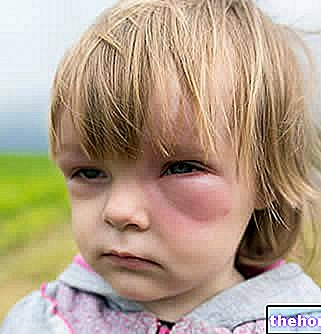Among all allergic investigations, the provocation test is the one that offers the greatest diagnostic guarantees, at the cost of a high risk of adverse reactions, sometimes even serious ones, and a high cost in terms of time.

The provocation test is a "third level allergological investigation; according to logic, in fact, when faced with the suspicion of an" allergy, the patient is first subjected to skin provocation tests (prick test, patch test) and only in the presence of a doubtful result is directed to second level investigations, based on the serum IGE assay (Prist test, Rast Test), and eventually to third level (provocation test).
The test consists in the direct administration of the suspected allergen (specific provocation test) or other substances (non-specific provocation tests, such as bronchial tests with methacholine or histamine). For example, if a "food allergy" is suspected, the allergen (for example egg or peanut proteins) is administered orally in dry or lyophilized form, generally by means of capsules; in the same way, in the case of suspected asthma the allergen is administered by inhalation. The patient is then kept under observation for a few hours, recording any symptoms objectively (size and number of wheals, spirometry, etc.); among the most common in the presence of allergic reactions are itching, urticaria / angioedema, nausea, vomiting, abdominal pain, diarrhea, dyspnoea, cough, rhinorrhea, sneezing, lacrimation, headache, irritability, tension and fatigue.
Oral provocation test
Oral provocation tests can be performed to diagnose allergic reactions to foods or drugs taken orally. The allergen is offered to the patient starting from a very low dose, which probably will not cause symptoms; at regular intervals (about 30 minutes), incremental quantities of the allergen are then administered, until a positive reaction is observed or until a standard quantity.
For maximum diagnostic confidence, the provocation test should be done double-blind; this means that the potential allergen should be accompanied by a non-allergenic control substance (placebo) and that neither the doctor nor the patient should be aware of the contents of the samples.
Double-blind placebo-controlled food challenge (DBPCFC) testing is currently considered the gold standard or gold standard for diagnosing food allergy. The result of this investigation is very important, since it allows us to formulate any exclusion diets, that is, without the allergen highlighted.
Although very sensitive and specific, even the oral provocation tests show some limitations. First of all, they are difficult to perform and can only be provided in a few specialized centers. The major conceptual limitation is represented by the fact that they are not always able to reproduce what happens to the patient in his daily life: a clear example of this concept is "food-dependent and exercise-induced anaphylaxis. Patients suffering from this form of anaphylaxis have a positive skin test and elevated IgE levels, but the anaphylactic reaction occurs only if the ingestion of the food is followed (in a time interval ranging from a few minutes to 3 hours) by physical exercise. an oral provocation test would result falsely negative.
Bronchial provocation test
The bronchial challenge test can be non-specific (with histamine or methacholine) or specific with allergens. Methacholine is a pharmacological substance capable of causing mild bronchial obstruction in asthmatic subjects, while it is completely harmless for the rest of the population. The bronchial challenge test with methacholine exploits this feature and involves the execution of a series of forced spirometries after inhaling increasing doses of the substance through a nebulizer.
There is also a bronchial provocation test that uses exercise as a trigger for exertional asthma. The subject is then subjected to a sub-maximal exercise for 5 or 6 minutes (running or walking uphill), and to various spirometries (before and after 5, 10 and 20 minutes from the end of the effort).
Nasal provocation test
After the administration of the allergen (for example pollen) by inhalation (spray), the number of sneezing is counted and the general clinical picture is evaluated; sophisticated instruments, called rhinomanometers, are also used, which measure the flow of air that passes through the nostrils and the resistance offered to the passage of air. The nasal provocation test is considered positive if there is a drop in conductance of at least 20%.




























